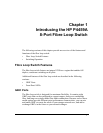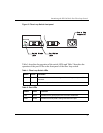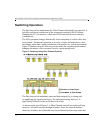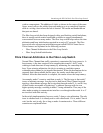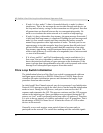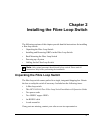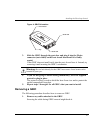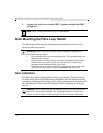
Introducing the HP P4459A 8-Port Fibre Loop Switch
5
wish to communicate. The addition of a hub, as shown in the center of the same
figure, merely allows the cables from each node to go to a centralized location,
such as a wiring closet where the hub is located. The media and bandwidth on
that port are shared.
The fibre loop switch has been designed with a non-blocking switch backplane;
there is enough switch matrix bandwidth available to support simultaneous
conversations between many nodes. The fibre loop switch helps reduce the time
arbitration and loop initialization required in an active FC network. The fibre
loop switch also supports an initialization agent called P4459A Name Server.
These features are explained in the following sections:
• Fibre Channel Arbitration in the Fibre Loop Switch
• Fibre Loop Switch Initialization
Fibre Channel Arbitration in the Fibre Loop Switch
Normal Fibre Channel data traffic operation is constrained by loop tenancies. A
loop tenancy is the time required for a complete data transfer. An FC node
wanting to send data starts a loop tenancy by arbitrating for ownership of the
loop. Upon winning arbitration, the device wanting to send data opens a
communication channel to its intended destination. When the destination device
responds that it has available buffer space, the sender sends data until it is
finished. After the data transfer is complete, the sender closes the loop tenancy.
An example: node C wants to send data to node A. The first step is that node C
issues an arbitrate message. In a physical or hub-based Fibre Channel network
topology, the arbitrate message has to circulate through nodes D, A, and B. Any
of those nodes are capable of replacing C’s arbitrate message with its own
higher-priority message, resulting in node C losing arbitration. Thus, any of the
other nodes wanting to communicate interfere even though neither node A or C
are involved with their activity.
In the switch implementation, however, node C always wins arbitration. The only
issue is whether node A is already active with a third node. If it is, node C has to
wait, but the wait is only for as long as node A remains active. Three different
scenarios are explained below:







